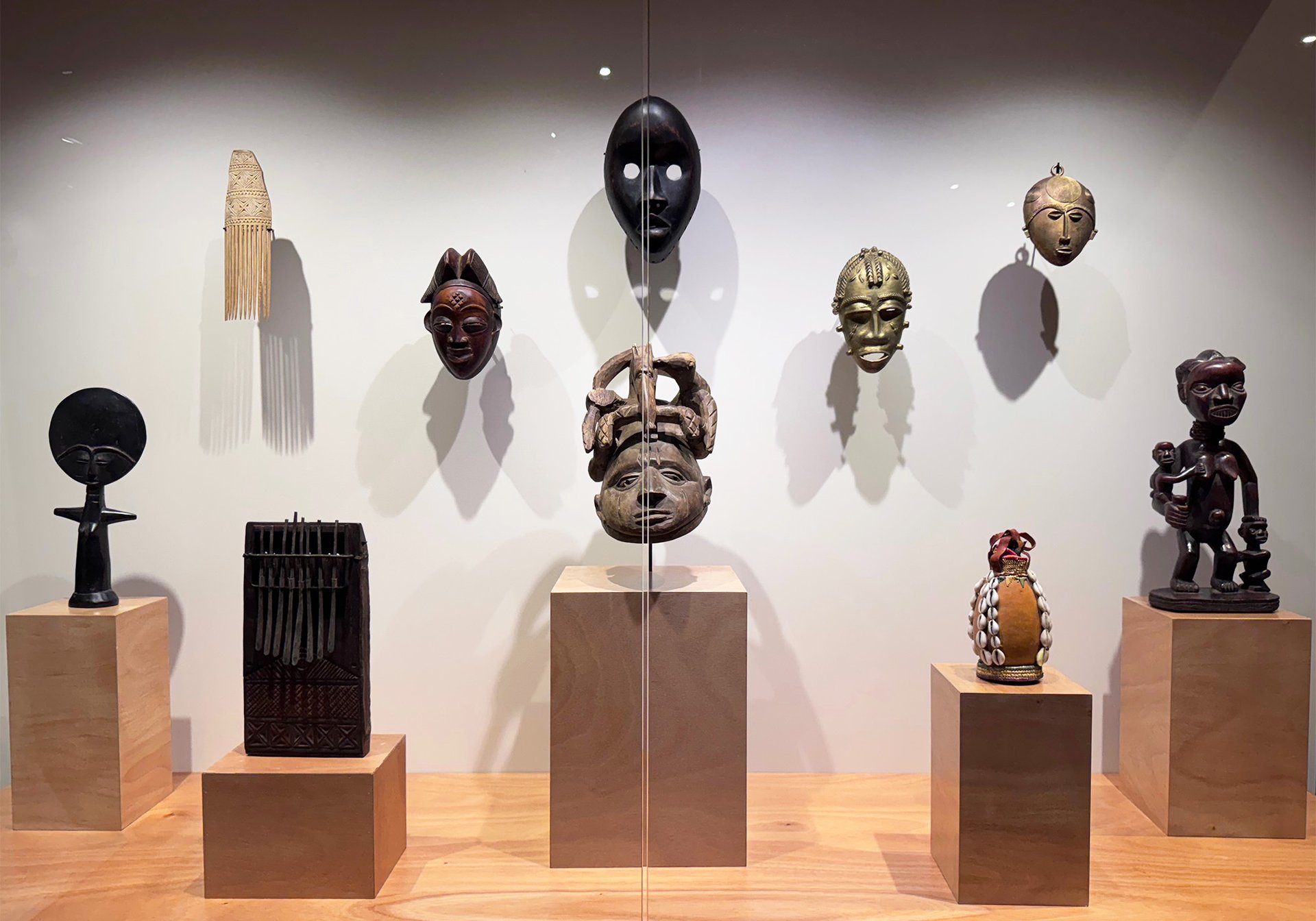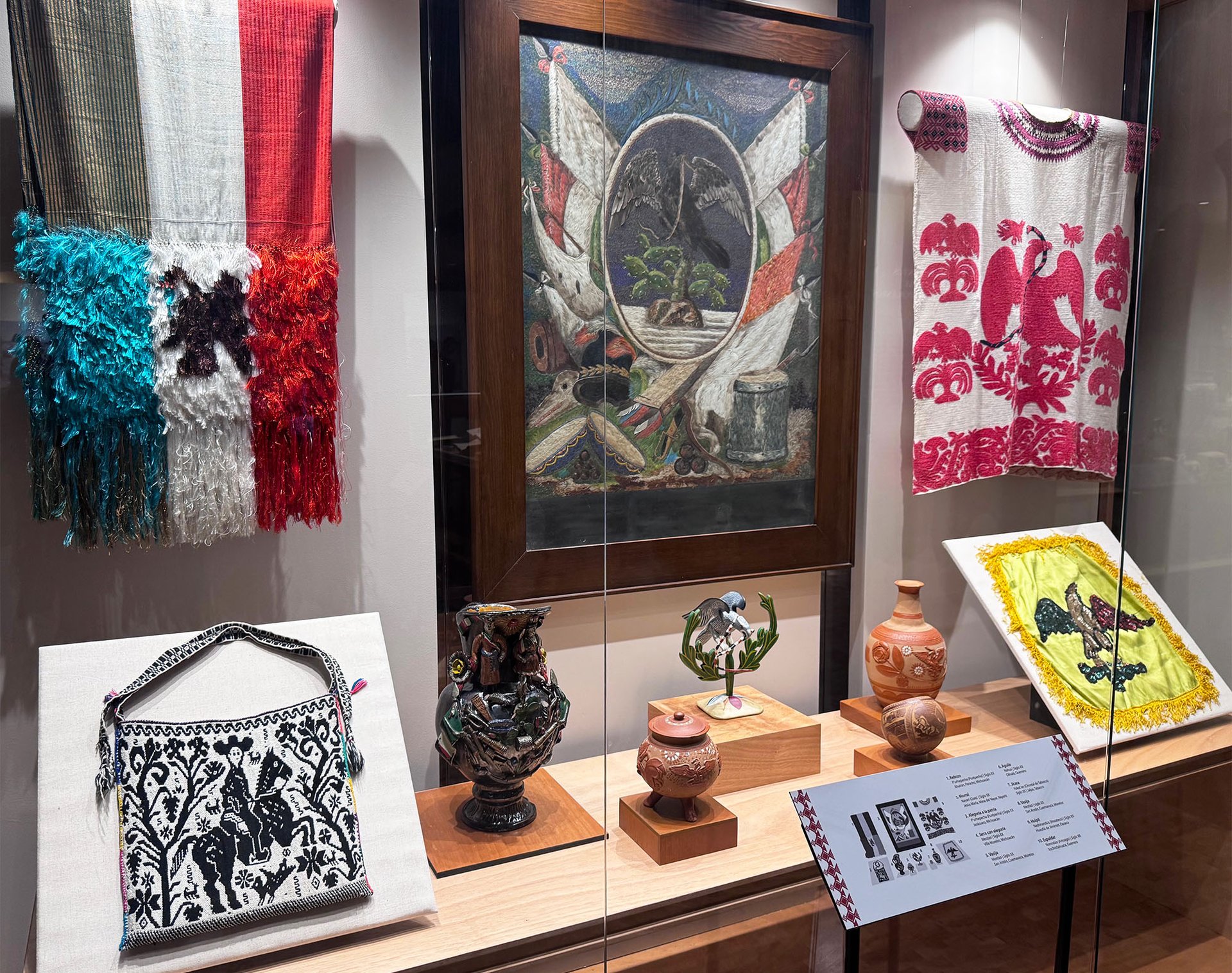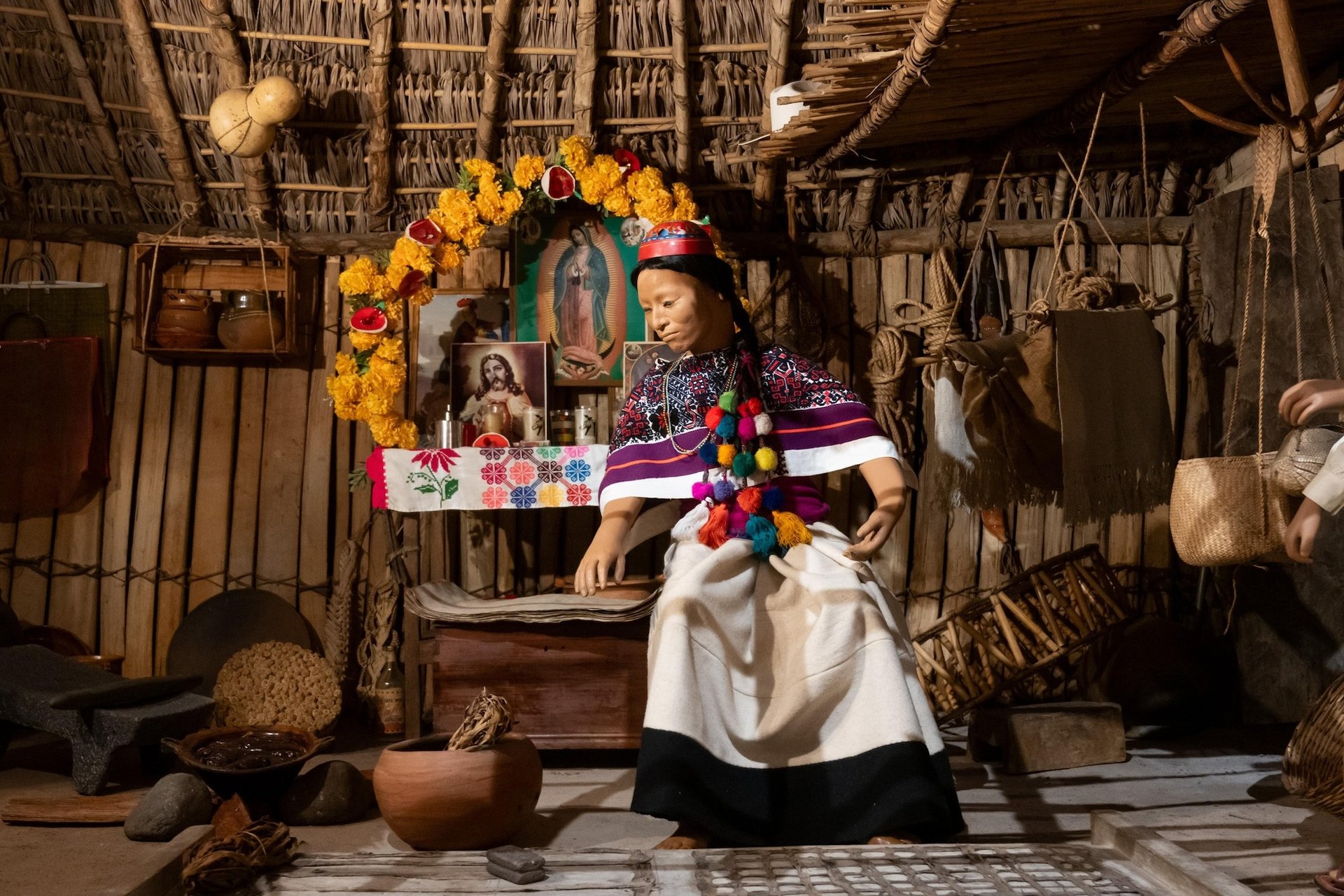On a crisp morning in January, vacationers lined up by the dozen outdoors the Museo Nacional de Antropología (MNA) in Mexico Metropolis. As they waited in line to entry one of many most-visited museums on the planet—3.7 million guests in 2024 in response to Mexico’s Instituto Nacional de Antropología e Historia (INAH), which manages the museum—they eyed the labour union banners canvassing the doorway. “In defence of cultural heritage, which supplies us historic unity and nationwide identification,” learn one in Spanish; one other declared: “No to the destruction of the INAH. No to the continuity of Diego Prieto and his staff. Sure to dialogue: for the higher way forward for the INAH.”
On 6 January, Prieto, the INAH’s director, smiled subsequent to Mexico’s President Claudia Sheinbaum through the re-inauguration of the museum’s ethnographic galleries, representing the nation’s residing Indigenous heritage. Beneath floodlights, members of the cupboard, navy leaders and artisans from Indigenous communities applauded the purported completion of the galleries’ reinstallation, recognized as a key achievement of Sheinbaum’s first 100 days in workplace. Claudia Curiel de Icaza, the tradition secretary, went as far as to assert: “The identities of Indigenous and Afro Mexican communities are for the primary time built-in and included within the narrative of a museum comparable to this.”
The declaration was untimely. Greater than two months after the re-inauguration, a lot of the new shows nonetheless lacked fundamental didactic labels, leaving the newly commissioned works by Indigenous and Afro-Mexican artisans unattributed. Fireplace hydrant indicators have fallen off. Electrical wiring is seen by means of a fist-sized gap beneath a mural by the British Mexican artist Leonora Carrington. And vacationers from around the globe stream by means of the cavernous galleries like colleges of fish with out having the ability to learn any of the brand new part labels, that are printed solely in Spanish.
A mural by Leonora Carrington within the not too long ago re-inaugurated ethnographic galleries of the Museo Nacional de Antropología Edgar Alejandro Hernández
The reinstallation is an unfinished undertaking. Roughly half of the galleries, which have been inaugurated in 2024 over the last presidential administration, have labels, signage and practical didactic shows. Not so the newer half, the place a couple of video show is switched off, whereas antiquated and inaccurate dioramas don’t have any interpretative data. The impression is one in all frenzied improvisation, begging the query: why did the president maintain an inauguration for an unfinished endeavour?
A delayed undertaking
When it was first inaugurated in 1964, the MNA’s two-storey open plan format was an innovation in museum interpretation. Its first ground, devoted to archaeological artefacts from Mesoamerican cultures, was additionally seen from the second ground, the place didactic shows introduced a group of ethnographic objects supposed for instance the lives of Mexico’s Indigenous communities, grouped by geographic area. On the time—the peak of Mexico’s so-called “good dictatorship” by the Occasion of the Institutionalised Revolution (PRI)—these communities have been perceived as vestiges of the previous, fated to vanish within the face of modernisation. The MNA’s messaging and imposing structure turned key to the PRI’s building of Mexico’s trendy nationwide identification, based on the concept of mestizaje, a shared and full hybridisation of Spanish and Indigenous cultures.
By the Nineties, when Mexico started the dual processes of democratisation and integration into world markets, this sense of Indigeneity as belonging solely to the previous started to lose favour. The EZLN (Zapatista Military of Nationwide Liberation) rebellion put Indigenous points squarely within the highlight, and the MNA started to plan a full-scale revision, which it accomplished within the early 2000s whereas conserving the gallery association by area. This period, lasting from 1994 till 2018, is now known as the “neoliberal interval” by the leaders of Morena, the populist, nationalist motion in energy right this moment, beneath whose aegis—through the presidential administration of Andrés Manuel López Obrador (2018-24)—the MNA’s ethnographic galleries have been reorganised into their current type.

A show of masks within the revamped ethnographic galleries of the Museo Nacional de Antropología Edgar Alejandro Hernández
When the undertaking is really completed, maybe guests will be capable of consider how the brand new curatorial script improves upon the discarded regional format, which didn’t give area to Afro Mexican communities, for instance. The brand new association is as an alternative thematic and organised into 5 sections: histories, identities and resistance; peoples, languages and territories; maize, milpas, land and nourishment; textiles; and celebrations and rituals. Funding got here from López Obrador’s flagship tradition undertaking, Chapultepec Forest: Nature and Tradition, whose complete funds ballooned to 10bn pesos ($486m) by the tip of his time period. A request for presidency data from 2023 revealed that every of the primary two gallery sections inaugurated final 12 months and dedicated to textiles and celebrations and rituals was budgeted at 14m pesos (round $680,000), suggesting the complete value of the undertaking might have stretched to 70m pesos ($3.4m), an eye-watering quantity for museum operations in Mexico. The funds have been managed by the INAH’s Nationwide Workplace of Museums and Exhibitions, beneath Prieto’s jurisdiction, and never the director’s workplace on the MNA. None of Chapultepec Forest’s initiatives have been delivered on time.
A hole sense of nationwide identification
Since being sworn in final September, President Sheinbaum has needed to end, right or restore a number of of her predecessor’s pet initiatives whereas remaining in lockstep with Morena’s populist rhetoric and precept of so-called “republican austerity”. The cultural entrance isn’t any totally different: all of her administration’s insurance policies have sought to distance her agenda from the so-called “neoliberal governments of the previous” and brandish a way of nationalism that capitalises on Mexico’s ethnic variety, in opposition to the parable of mestizaje that’s right this moment denounced as a inflexible assimilation coverage. In accordance with a press release by a spokesperson for the ministry of tradition: “This reinstallation represents the easiest way this museum [and the INAH] can renew its dedication to the cultural, political and social plan of Mexico’s authorities, most not too long ago upheld by Congress by means of the constitutional modification which reaffirms that Indigenous and Afro Mexican peoples are deserving of civil rights.” The assertion makes plain the MNA’s instrumentalisation by a political get together that has strengthened the navy and bulldozed the judicial department, whereas proclaiming itself a torchbearer for ethnic and racial equality.

A show case within the not too long ago re-inaugurated ethnographic galleries of the Museo Nacional de Antropología in Mexico Metropolis Edgar Alejandro Hernández
A go to to the galleries confirms the reinauguration occasion was all type and no substance, and that the reinstalled shows take critical liberties in how they painting Indigenous heritage. As an illustration, within the “histories, identities and resistance” part, a video consists of clips from two fiction movies courting to the Golden Age of Mexican cinema (1936-56), wherein celebrity actresses of the period Dolores del Rio and María Félix—neither of them Indigenous—play Indigenous roles. The video additionally consists of pictures from documentary movies about Indigenous communities. There is no such thing as a data to clarify the excellence between truth and fiction, or the development of “the Indian” for public consumption in distinction to ancestry, belonging and ritual. This drawback is repeated all through the galleries, the place facsimiles and replicas are sometimes displayed beside unique artefacts. Guests don’t have any data and no instruments to inform documentation from fiction, or unique expressions from facsimiles.
“The official act of the inauguration was deliberate by the presidency and the secretariat of tradition, the federal authority to which the INAH and MNA belong,” says Antonio Saborit, the MNA’s director. The unfinished state of the set up—Saborit says he expects wall labels and different didactics to be completed “within the subsequent few months” and English labels to take the remainder of the 12 months—and the conspicuous indicators that the museum’s specialised work power opposes the continuance of Diego Prieto’s management of INAH counsel the MNA’s ethnographic galleries have been inaugurated solely for political achieve. As occurred with Morena’s constitutional amendments earlier this 12 months, the get together cared extra about imposing its ideological tenets than how the outcomes and the means by which its political victory was achieved would possibly hurt public establishments and their worldwide standing.

A life-size diorama within the newly refurbished ethnographic galleries of the Museo Nacional de Antropología in Mexico Metropolis Secretaría de Cultura
President Sheinbaum used the ethnographic galleries’ reinstallation to stage a political occasion that will not solely give closure to one in all her predecessor’s initiatives—Chapultepec Forest’s expenditures went nicely over funds and lacked transparency—but in addition place her as efficiently delivering on all issues of public administration, which in Mexico consists of tradition. The secretary of tradition’s self-congratulatory tone when noting the inclusion of Afro Mexican communities seems all of the extra spurious on condition that it’s exactly the vitrines with Kente material, African helmet masks and Akuaba dolls that lack fundamental labelling figuring out the artifacts, their origins and their significance to Mexican cultural variety. The chance to find out about these communities and their contributions to nationwide heritage has been misplaced for the tens of hundreds of tourists who’ve already handed by means of the unfinished galleries.
Primarily based on what’s right this moment accessible on the museum’s second ground, Indigenous and Afro Mexican communities stay sadly absent from the MNA’s curatorial script, as a customer will be unable to establish them, recognise them and even inform them aside from fictionalised variations in film excerpts. The fanfare surrounding the ethnographic galleries’ re-inauguration served one goal solely: to trumpet the brand new administration’s delight in a string of doubtful achievements whereas strengthening a political motion that has trafficked in identification politics to stoke nativist sentiment and win votes. The INAH’s staff picketing outdoors the museum in January mentioned it greatest: might there be a greater future on the MNA, wherein cultural heritage is valued and defended for its personal sake.









